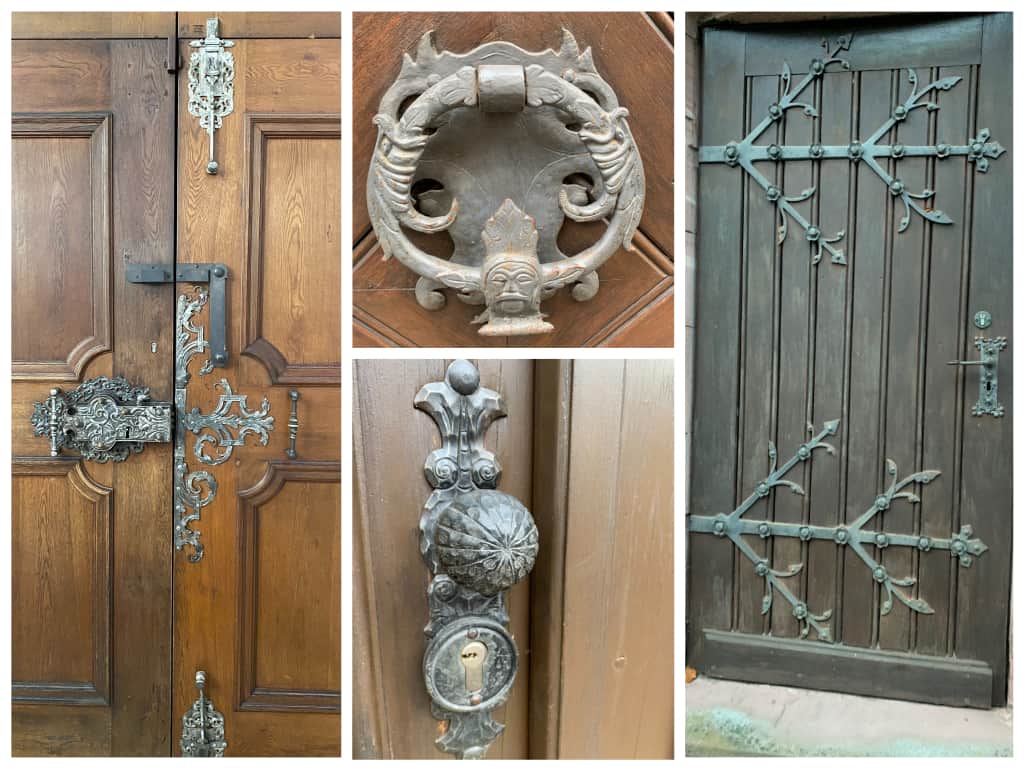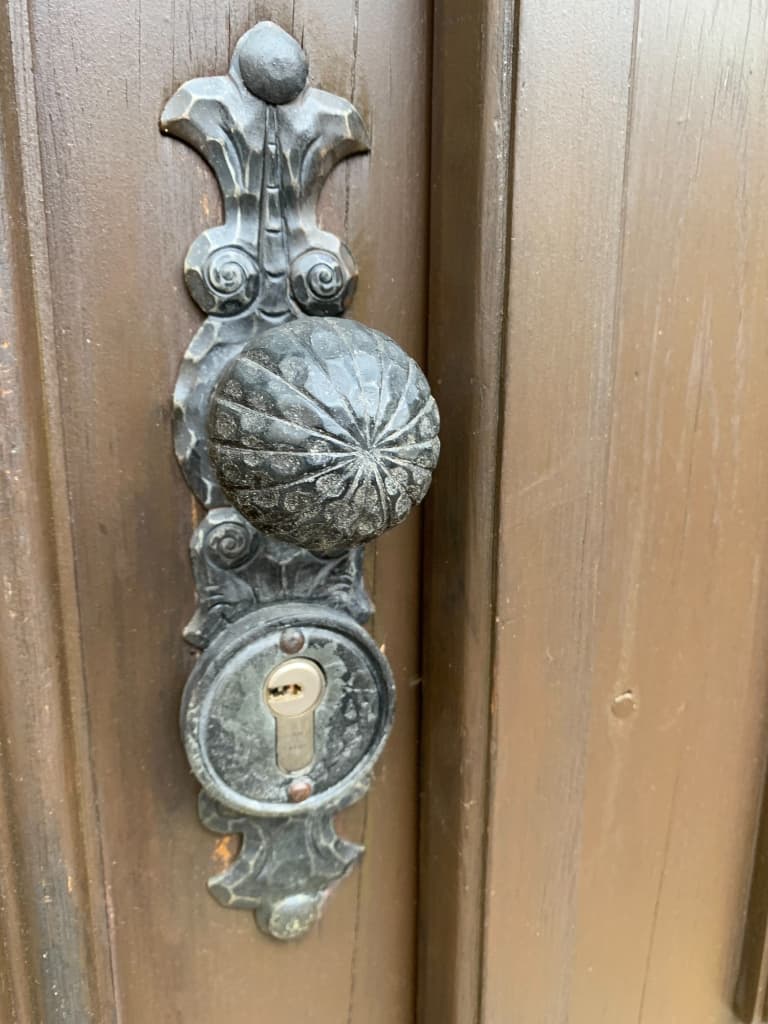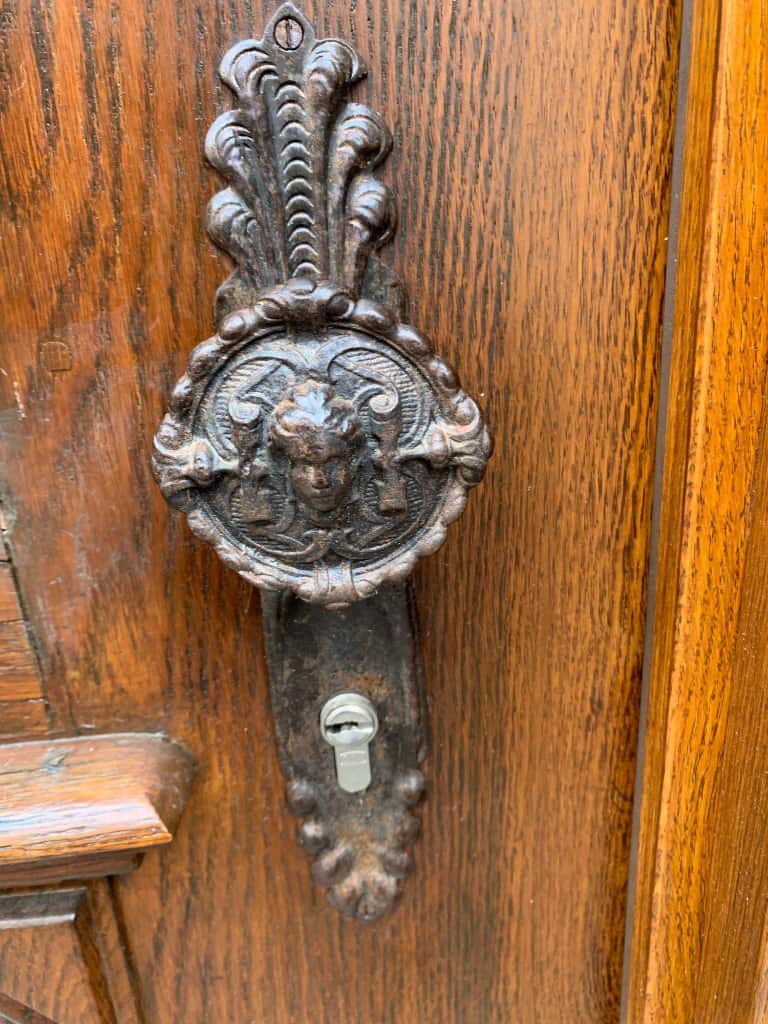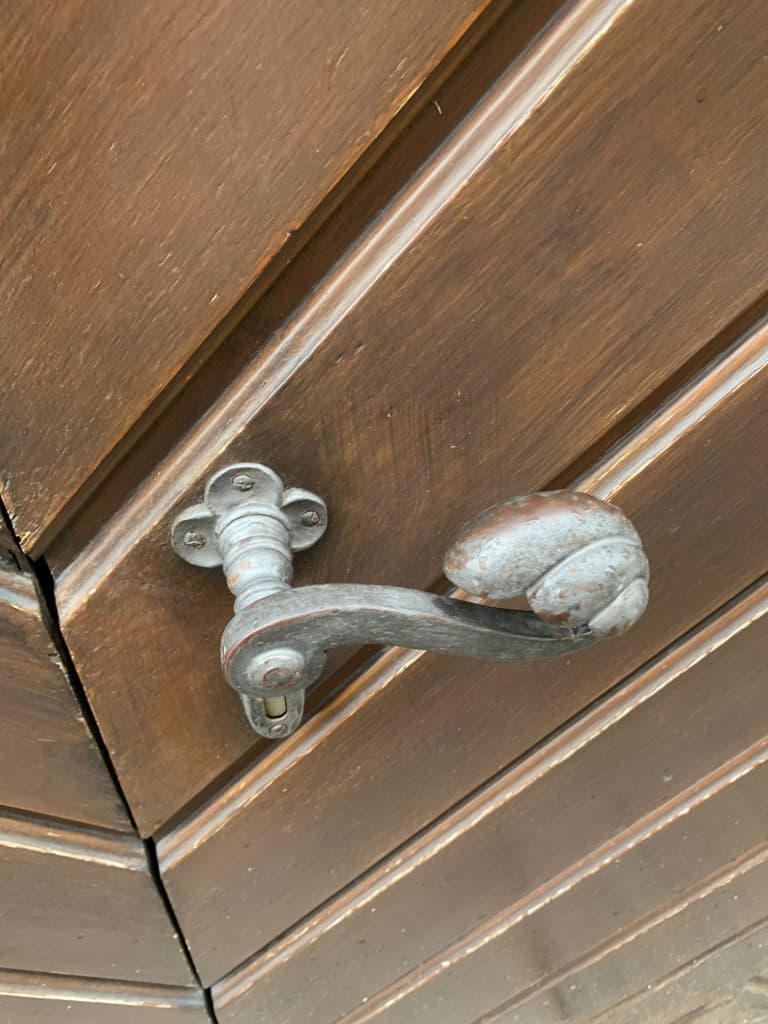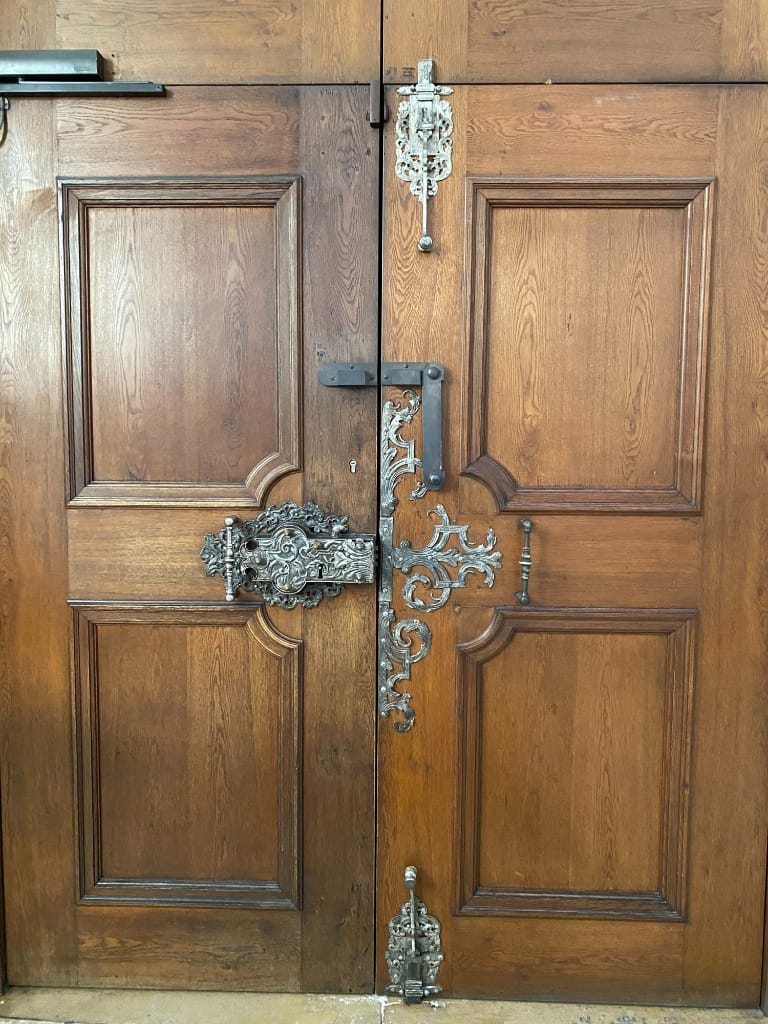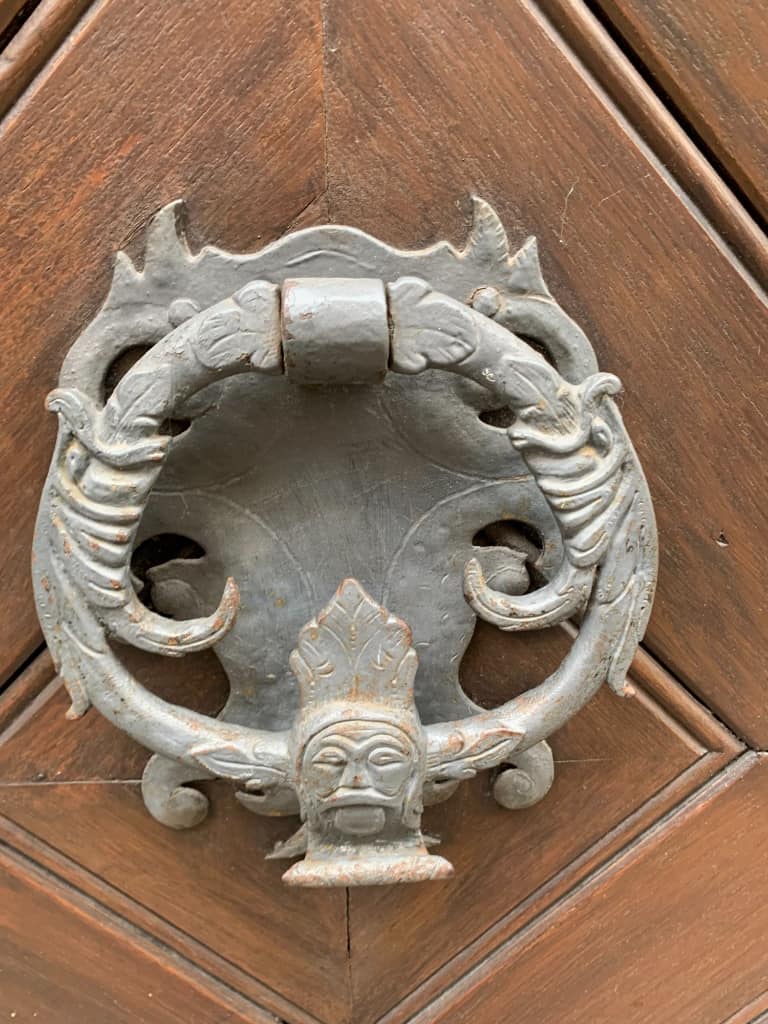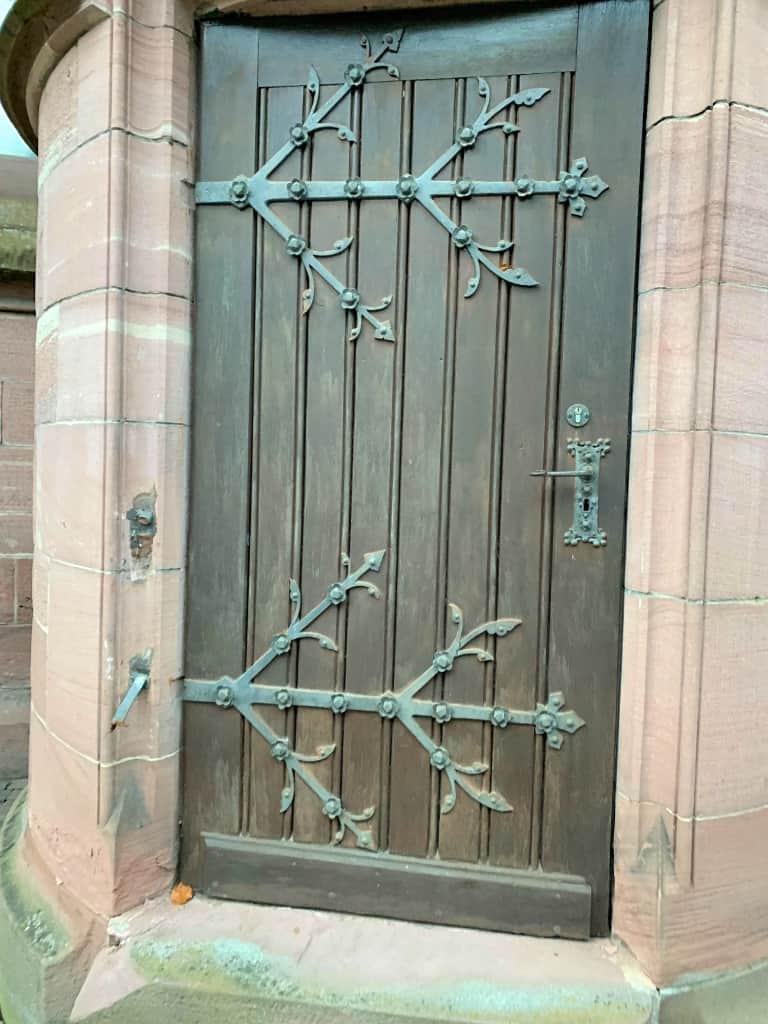Excel Marketing’s Chad Booth recently visited Germany. There he captured some wonderful photos that depict an earlier time, 747 years earlier to be exact. The old-world European hardware featured here is from Rothenburg ob der Tauber, a German city along the Romantic Road.
About Rothenburg ob der Tauber
Rothenburg ob der Tauber is a German town in northern Bavaria known for its medieval architecture. Rothenburg ob der Tauber is one of the oldest and most historic of the medieval towns along the Romantic Road, a themed route that guides tourists through several picturesque towns and castles. Travelers embark on quintessential German scenery and culture along the Romantic Road.
Visiting Rothenburg ob der Tauber, you will find half-timbered houses that line cobblestone roads. The town is well known for its walls and well-preserved gate houses and towers. With that comes beautiful, intricate doors. The town features late Gothic, intricate pieces like the door hardware you see below. Everywhere you turn there are well-preserved remnants of medieval architecture and design.
“There is nothing quite like the craftsmanship from the old-world. These pieces are marked with old-world craftsmanship that withstands the test of time both in durability and style. The pieces shown here are from doors in Rothenburg ob der Tauber. I hope you enjoy looking at these as much as I did.” – Chad Booth, Excel Marketing
Preservation History
Although there had been settlements in the area and in the neighboring Tauber valley for many centuries before, the official history of Rothenburg is generally thought to date from the 10th century with the construction of a castle in an easily-defensible position above the River Tauber (thus “Rothenburg ob der Tauber” – ober meaning above).
The original line of rulers died out and so the castle and neighbouring town came into the hands of the Hohenstaufen Emperors of Germany, who granted it an official town charter in the 12th century.
The town walls and many of the buildings which still exist were constructed during the next century (in fact, rapid expansion meant that a new outer wall had to be constructed within 30 years of the former city walls being finished) and the town was granted the position of a Free Imperial City.
Despite these fortifications (or perhaps they are a sign of the times) Rothenburg has a tortuous history of wars and alliances, ranging from involvement in wars between the counts and princes, followed by enthusiastic participation in the Peasants’ War (which led to mass executions in the market place).
Donations From Across the World Helped Repair Rothenburg ob der Tauber
The subsequent Thirty Years’ War gave the legend of the “Meistertrunk” to Rothenburg – the town mayor is supposed to have quaffed a massive tankard of local wine as part of a bet to save the Protestant town from pillaging by Catholic forces. In fact, the town was forced to pay a massive amount of money and goods as a bribe to pay off the opposing forces after pleas from the children and womenfolk of the town.
A play was developed around the legendary events towards the end of the 19th century – the town had long since become part of Bavaria – which helped to market the town’s medieval charms and led to the interest in the history and appearance of Rothenburg on an international level and to restrictive laws being introduced to control changes to the “look” of the historic center. (Source)
This was part of the reason for the relative preservation of the town from the destruction experienced by many other places in the Second World War. Although the town was bombed from the air, ground commanders on both sides hesitated to attack or defend with full force as the war came to an end.
The damage wrought by the bombing was repaired, in part, by donations from across the world. (Source)

